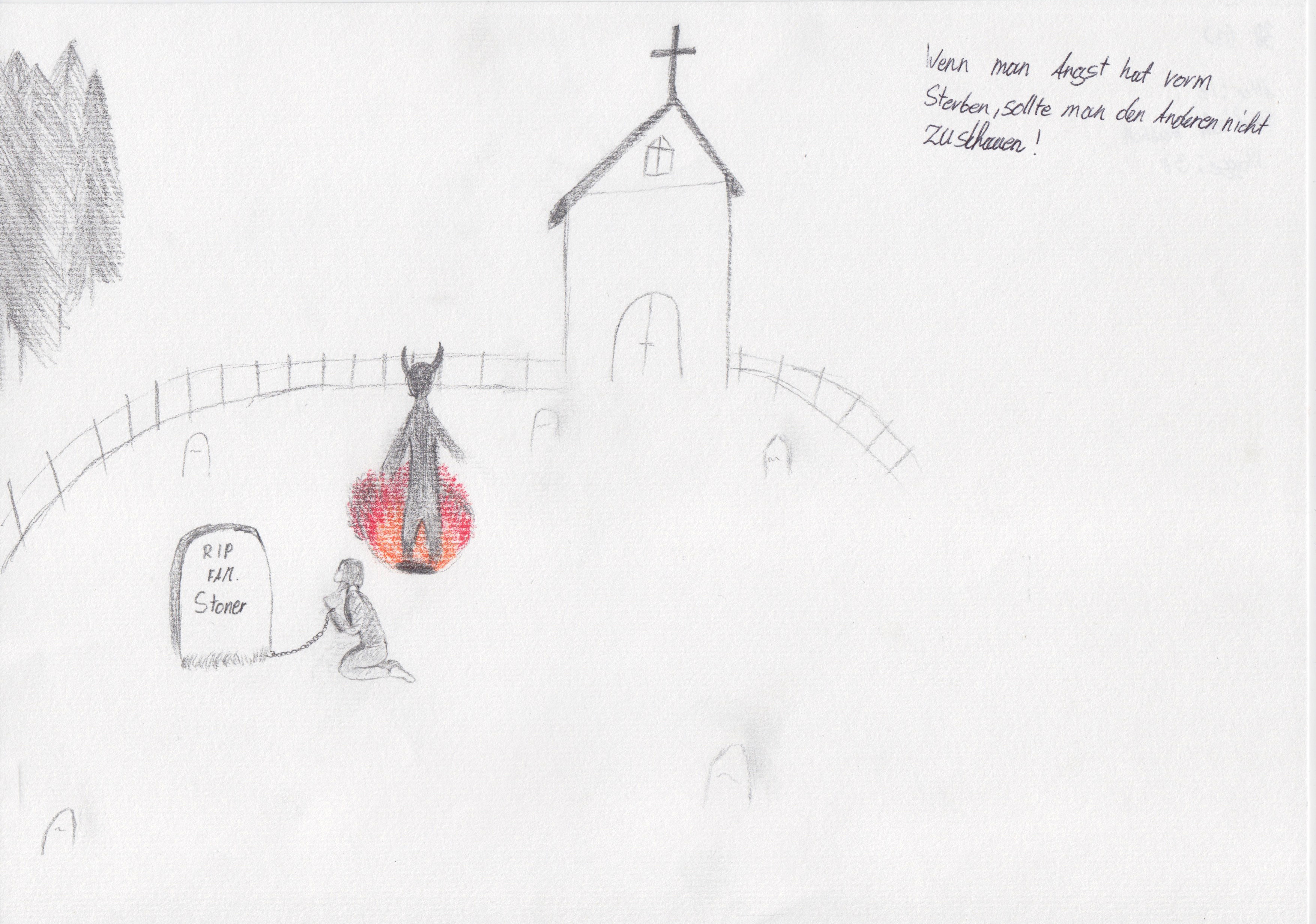Analysing the drawings of the high school children
(~ age 11 to 16)
As I already mentioned the drawings of the older children tend to be more precise and clear in their expression. They make use of a variety of complex combinations of shapes and forms in order to create their stories. They draw figures like clowns, monsters, ghosts and aliens, which are also contemporary examples of representing fear, like in horror movies. Some drawings show ‘Slender man’ or ‘Reaper’, representing the fear of death. In some cases they even make use of emojis.

This drawing is one of the most powerful ones to me. The reason why I think this drawing is so powerful is because of the way this child expresses its idea about fear. It brings this feeling with a precise clearity to paper and does not and it does not shy away from what others might think of it. It seems like there is a lot happening in the mind of this child. In the top right corner of the drawing the child wrote something in German: “If you are afraid of dying, you should not watch the others”. In the center, quite dominantly, you can see a small building. (I guess it’s a christian church if I look at the cross on the roof of this building.) We can also see a cemetery with a gravestone on, saying: “R.I.P. Fam. Stoner.” There is a chain attached to the gravestone. Tied to this chain with the hands is a person (girl?) kneeling in front of the grave stone looking up at it. Right behind her appears to be another figure, which I can only identify as satan. He rises from a red and orange coloured hole in the ground. He has a tail, horns and no face. He is faced towards the person kneeling on the ground, standing still and watching.
I also learned a lot about the teachers that I worked with and about their reaction to these drawings. Some of them did not take the drawings of the children seriously, especially the drawings of the younger ones.“I hope you can do something with these drawings, for me they just look like a mess.” “I hope the drawings are good enough for your thesis, I mean these children are just drawing whatever they want.” These comments evoked a reaction of sadness in me. I believe we should value each child’s opinion.
The reason this collection is so valuable to me is BECAUSE they are children placing their thoughts on paper with no shame. There is so much to learn, so much to see and so much to analyse, if we are just willing to listen to their stories they are trying to tell us. In their mind there is no right or wrong. Children have not yet been shaped by the normative systems we live in. Surrealist painter and author Sylvia Fein puts these thoughts into words stating: “This is a book that all educators should read. It explains-actually shows-how art is central to all learning right from the beginning. We undervalue it in school at our- or for our children’s-peril. Visual elements like circles, parallel lines, crosses and spirals originate within the mind and applied to the world, make the latter more accessible to human understanding.” 4
I am amazed by the powerful and strong images these children gave me and how much they trust me by being so raw and honest with sharing their deepest fears. I feel empowered by these drawings and hope for future generations that we take these small human beings more seriously with their art, their thoughts and their stories. This research is not just about visual research anymore, but about how art–yet again–can express the most abstract forms of such a strong emotion: FEAR.

